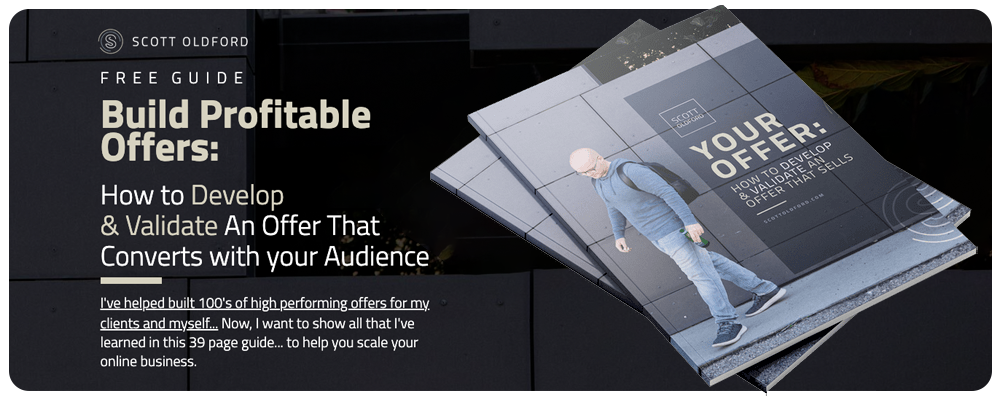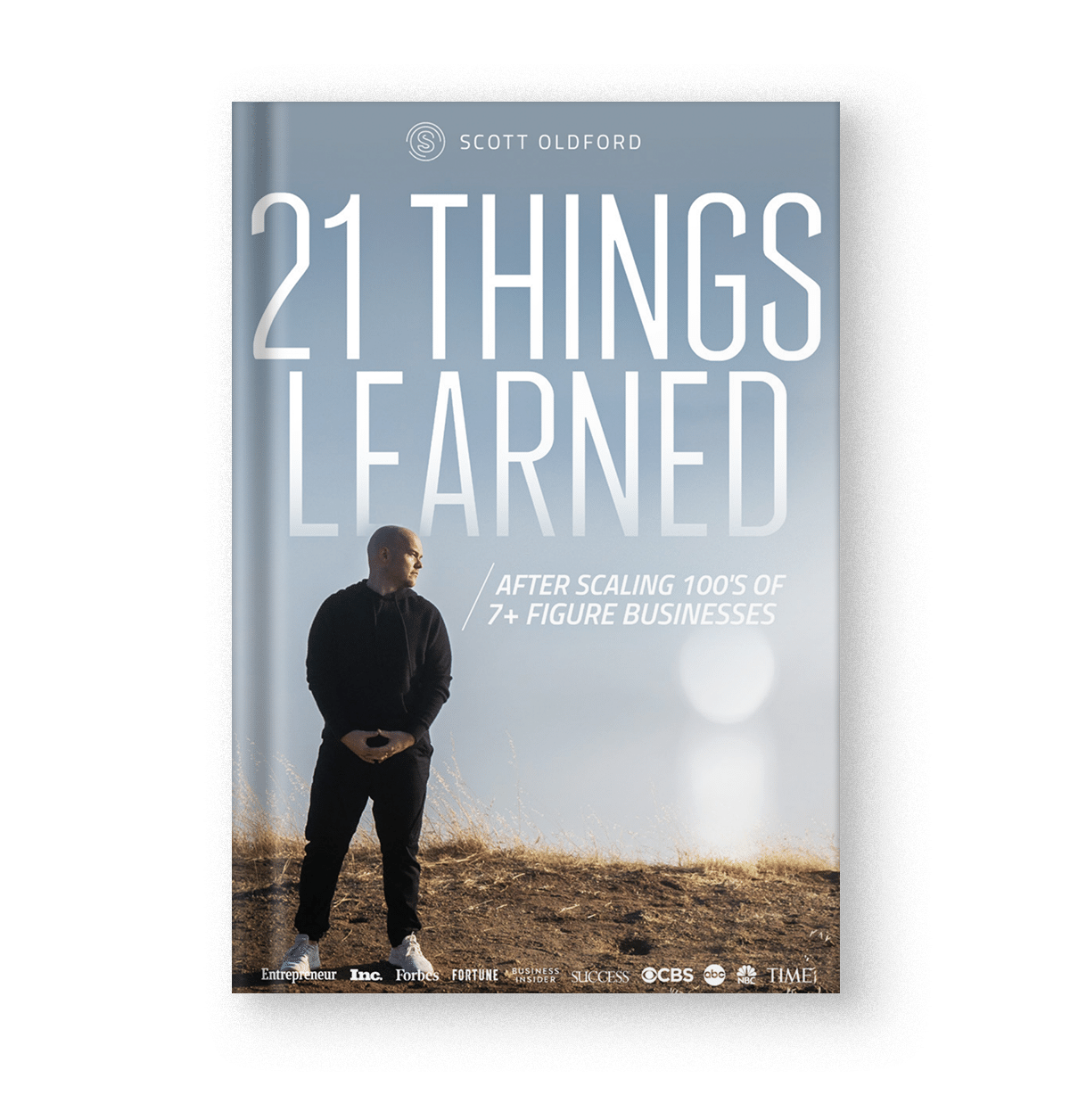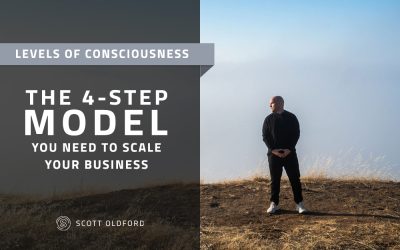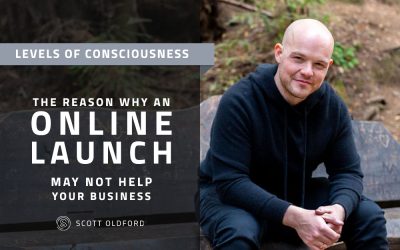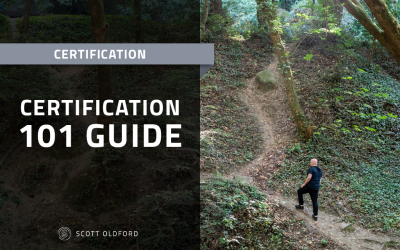
Having a great, irresistible offer isn’t an easy thing to achieve.
But having the different kinds of offers that can help you grow your business while still helping you grow your personal wealth is an even harder thing to do.
When you’re building a business, you want to grow it and keep growing it. But it’s tough to be able to actually grow while still being able to keep money in the bank.
I’ve dealt with this problem for years: I’ve made tens of millions of dollars, and I’ve spent tens of millions of dollars on my businesses, but I didn’t really keep money until I started to think about it differently.
It feels a lot better to be a multimillionaire, save money, and invest it than it does to just keep on building a business for the sake of building a business.
Yes, there are certain businesses that are built to grow and then you make money by selling it. But for most of us, people who are coaches, consultants, or course creators who are building our personal brand, we’ll only make money by taking it out of the business the right way and putting it elsewhere.
So what are the different types of offers you can create to scale your business faster, and what’s my strategy to build my wealth without spending money endlessly on growing my business?
That’s what you’re going to discover in this post.
The Not-So-Obvious Truth About Having Offers That Help You Scale Past 7 Figures
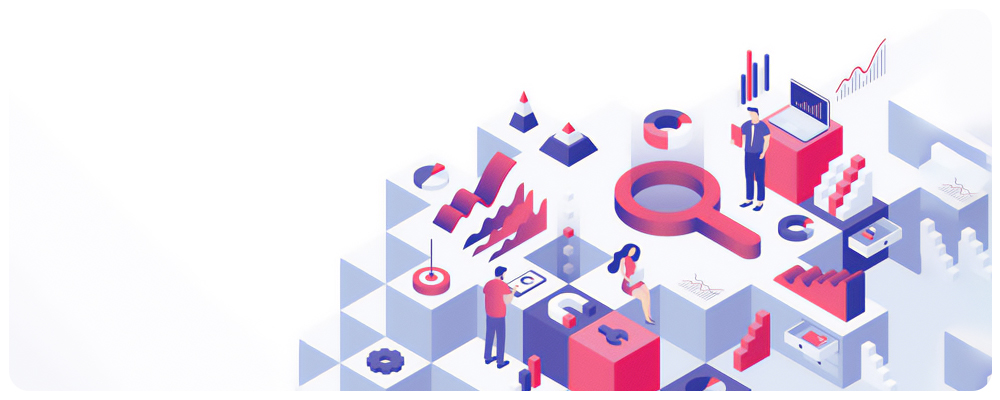
Now you have an offer that has a clear outcome and is irresistible, as I showed you in this post.
But you have to keep it in context. You need to think about the big picture and where this offer fits into the overall journey your customer is on.
Remember when I told you that entrepreneurs usually make the game harder on themselves and they start scaling the wrong offers that are doomed to failure when they want to scale their business?
This is one of the reasons why.
If you plan to build a course business, it can be profitable at the beginning if you do everything right, but when you go to scale it, it’s not as profitable. Let’s say you’re doing $100,000 per month on sales. Typically, you’re gonna spend 60% on advertising, another 10% on delivery, 10% on a team, 10% other expenses to grow your business, and so your margins are 10 to 20%.
So that means that $100,000 turns into a pretty small profit margin
To scale your business you’ll need to have different offers that are connected to one another so you can generate more revenue from the same customer.
Yes, your offer may be great and it will get your customers from point A to point B, but what happens after that? If you don’t think about the big picture, you will need to pivot and change your offers later on.
So why make the game harder on yourself?
When I look at a business, I always look at these 4 KPIs (key performance indicators) to evaluate it:
- Monthly Recurring Revenue (MRR): How much money is generated every month? You need to take into account the amount that can be easily canceled by the customer.
- Lifetime Client Value (LCV): How much revenue is being generated per customer across three, six, twelve, and twenty-four months, and what is the potential of new sales from current customers?
- Client Retention Rate (CRR): How often does a customer leave or want to leave a contract?
- Revenue Per Lead (RPL): How much revenue is generated per lead in marketing?
Very few entrepreneurs spend time thinking about these numbers and how to strategically improve these metrics.
It’s always a high-value activity to think about (at least once every quarter, ideally more frequently). It’s certainly a higher value activity than adjusting day-to-day tactical operations within your business or resolving sticky client situations. This isn’t to say that you should ignore those things, but strategic-level thinking makes a comparatively huge difference compared to them.
Luckily, when you start improving the above 4 metrics, you equip your business with more resources so you won’t personally have to deal with those low-value operations as often, since you’ll be able to outsource those things while you focus on the big picture.
And it all starts with a well-thought-out customer journey and an integrated product suite that can help your audience at major points along their path.
Your goal is to intentionally design your offers to match your client’s journey toward their goal(s).
That’s why you need to have the 12:12:3 customer success map.
The 12:12:3 Customer Success Map

The 12:12:3 customer success map is a “map” of what your customer’s life will look like twelve weeks, twelve months, and three years after they start working with you.
Think about the results they’ll achieve and what they’ll need at each stage, for example, like more coaching and guidance and so on.
Once you have this map clearly detailed in front of you, start thinking about crafting offers that flow into one another.
More importantly, think about how you’ll actually be able to take your client fully from where they are now to their true ultimate vision of where they want to be and what they want to achieve.
The truth is, most entrepreneurs don’t do this.
They start with a one-on-one service, or a small course, or a group program. And then they need to make more money from the same audience they have, so they launch another offer. And this is a HUGE no-no. It’s normal, even typical.
What ends up happening is that you just keep adding offers to make more money without a real plan. This will eventually lead to having new businesses inside of your business, which requires more work on your end to keep operations running.
Every new offer is a new business, a new set of processes, another “machine” that you have to maintain.
And if they don’t integrate, either your customers are going to leave you, or you aren’t going to have enough options for the different types of customers you will attract:
- Those who don’t have enough money.
- Those who have a different learning style.
- Those who want to do it themselves.
- Those who want it done for them.
But what if you plan it all out from the start? What if you have your customer journey mapped out?
Even if you don’t create all of the offers at once, which I don’t suggest anyway, you need to understand how your various offers will affect your business once the time comes and you’re ready to scale your business.
If you have a plan from the start, you’ll be able to increase the revenue you generate from your customers and develop recurring revenue while reducing the amount of labor/time wasted and operational optimization going on in your business.
So what you need to do now is figure out the milestones that your customers will hit along the way to their ultimate goal and craft ways to fit your offers into these milestones (including the final one).
Usually you end up with 3 types of offers.
The 3 Most Common Types of Offers

When you do the exercise above, you will likely end up with at least one of each of the 3 types of offers: a Core Offer, an Ascension Offer, and an Inner Circle Offer.
You might have more in mind, but as long as you have these three covered, you’re well on your way to effectively planning out your business model, at least with regards to your offers, which are central to that process.
The more you grow and the more resources you have, you’ll be able to generate more offers to suit more people, and it will be your job to make the business come together and avoid creating separate/redundant businesses inside your existing business.
Having a cohesive offer model that you planned out ahead of time will lead you to have enough momentum, enough leads, and enough resources to build an entire business that makes sense. This is when you’ll find peak profitability and scalability in your business.
But for now, let’s focus on the 3 common offers that you can get started with.
Core Offer
Your Core Offer is your initial offering. It should have a single, clear outcome.
The goal for the Core Offer is to give your client a major boost toward their ultimate goal over the course of the first twelve weeks (which is essentially a ninety-day sprint).
The promise is to get them through the first major hurdle(s) on the way to the ultimate goal they want to achieve.
The core offer is a great way to provide your client with powerful results, and it could serve as a trial period to decide whether the client is someone you would want to work with long term or not.
Usually, the true ultimate goal that people really value very highly takes longer than twelve weeks to achieve. That’s why the core offer should flow directly into the Ascension offer.
To know if you’ve developed the right Core Offer, look at the position of people after they finish it.
Does it consistently land people in the right position where they see it as a no-brainer to keep working with you? If yes, then your Core Offer design is on point.
The Ascension Offer
The Ascension Offer’s job is to take your successful client from your core offer and help them achieve the end result that they want.
This is the ultimate goal that they’re truly after. Obviously, it varies greatly depending on the goal, but for example’s sake, let’s say it takes approximately a year to accomplish that ultimate goal.
This means that the Ascension Offer is going to be a step up in terms of the value promised and the commitment required (both financial and time/energy commitment).
Remember that the depth of someone’s transformation is almost always correlated to the strength of their commitment and their intentions.
The best part is that your customers view the Ascension Offer differently from the Core Offer, which makes it an easier sell.
Usually, when people consider the Core Offer, it’s the first thing someone buys from you, so they look at it purely from an investment point of view.
But when it comes to the Ascension Offer, they’ve already received value from you well beyond the price they paid for the Core Offer.
Besides that, they’ve been regularly paying you for a few months, which means that paying you has now been normalized a bit.
As you continue to provide enough value, clients will start seeing you as a regular normal expense that is a key part of their growing success in business and/or in life.
This is the true source of regular, recurring revenue for your business.
Being able to make individual sales that then pay you monthly for a whole year will give you completely new levels of freedom and security in your business.
Having a solid Ascension Offer in place that has a greater MRR than your monthly expenses will give you peace of mind in knowing that each and every month’s expenses are essentially guaranteed to be covered.
This actually means that you could take a break from the business every once in a while without worrying about what will happen if you don’t hustle your way into creating multiple new clients over the coming weeks.
This may sound like a dream. Well, let me just say that it’s hard–if not impossible–to achieve when you’re stuck in the six-figure hamster wheel, but with the right Ascension Offer, it is in fact very doable.
The Inner Circle Offer
The Inner Circle Offer is an unadvertised, highly intimate program. It is done with very few, select clients.
Clients in the inner circle typically have an exclusive level of access to you, and this usually includes at least one or two private days or small group mastermind events.
Unlike the Core Offer and Ascension Offer, the Inner Circle is not designed to scale. It is designed to be limited and exclusive and intimate.
This means it comes with a significant investment and it is reserved only for people who you would be thrilled to spend time and energy with (whether you are paid for it or not.)
And while you need to deliver a lot of value to these clients because of the extra significant price they pay, usually a huge part of the value these clients get comes from the community of people in the inner circle and the greater depth of the relationship they get to have with you.
Yes, this offer is going to stretch you and force you to discover new, powerful ways to deliver value to clients. But it’s worth it for a couple of reasons.
First of all, you can take the discoveries you made during the Inner Circle Offer creation process, and leverage them to positively impact all of your offers.
But perhaps even more importantly, the Inner Circle offer allows you to connect with people more deeply which also creates some of the best opportunities for partnerships, exclusive licensing, and top-level referrals.
This Works for 80% of People
One thing I want to end with is that just because I talked about these 3 specific types of offers, that doesn’t necessarily mean that they’re always the best ones for every person in every situation..
The 3 offers that I’ve described will work for 80% of people. It wouldn’t be wise to mention different offers and leave you wondering what to do.
But at the end of the day, the type of offers you use depends on different factors like your marketing, your audience size, and your business goals.
Usually, your offers will change over time as these factors change.
The question now is…
How To Grow Your Business And Increase Your Personal Wealth (The Right Way)

Now that you know the different types of offers, I wanted to share with you a little system that I put together that I’ve used for building my business in a much more financially conscious way.
This isn’t about investing or even necessarily saving.
This is how you can grow your business while still having enough profit to grow your personal wealth.
I created this video that goes in-depth about how to do it with behind-the-scenes numbers from my business.
Basically, I use my front end offers to take care of my growth. My low-ticket book funnel, my workshop, and my core offer (which is a membership that gives me recurring revenue) is taking care of my team cost and my advertising cost.
I’ve even started to generate a slight profit by increasing my memberships.
The best part is that I’m growing my email list as I’m sending people to my low-ticket book funnel while also generating some revenue to offset some of the paid advertising cost. I then start generating some revenue from the core offer right away. You can see examples of what this looks like in the video above.
So, after I receive my digital product income (low-ticket and core offer) I can then decide do I want to keep the money in the bank right now? Do I want to spend it on teams and operations? What I can spend on to grow the business? Paid advertising? Content development? Partnerships? Podcast strategy? YouTube strategy? Instagram strategy? And so on.
So the low-ticket offer leads to a core offer and then leads to a back-end offer (the ascension offer or inner circle offer or maybe one-on-one). This is where you generate the profit. You take 100% of the revenue of the back end, and you put it into the growth of your wealth. Wealth could be investing, creating new product lines. It could be just saving.
The money that I make on the back end, I pull it out of the business instantaneously. I keep it in a business bank account. I may not know exactly how I’m going to use it right away, whether I’m going to be paying taxes, put it into a long term insurance, long term investment, buy another business or whatever it might be. But I know that I’m most likely not going to spend it on the growth of my business.
In a perfect world, you would invest money and get your lifestyle taken care of from investments. But that takes a little time depending on how much money you’re spending on your lifestyle.
If you want to see me as I do a walkthrough of my spreadsheet and show you how I’m doing this in my business with real numbers, check out the video above.
Having this system in place allows you to grow your business from one part of the revenue and keep the other part somewhat separate.
This prevents you from falling into the trap where you go look at your bank account when you want to grow, determining whether you can afford something or not, and before you realize it, you’ve spent all of your earnings on growth, just like I did for years.
With my old mindset, it was all too common to get a $100k payment from one of the one-on-ones and then spend $25k on Facebook ads, and most of the time I didn’t need to spend that money.
Scale Your Business & Grow Your Wealth Simultaneously
Now you know how to create your offers in a strategic way that helps you to scale your business and earn more revenue.
You also understand my strategy to grow and scale my business while building my wealth simultaneously, how I’ve been able to create growth in the front end, and profit on the back end so that I can actually take money out of the business.
As you know, I’m not trying to sell this business, I’m trying to invest in other businesses that I can then go sell.
For every business owner reading this, I want you to become wealthy, and I want you to have a big audience, and I want you to experience growth in all areas of your life.
You are now one step closer to scaling your business and growing your wealth.
If you want to know more about offers and how to develop your offers, make sure to grab this 37-page pdf where I share everything that I’ve learned about offers.
